KTM ADV Range: Adventurous Soul
After riding KTM’s revamped 1090 and 1290 Adventure models on 350km of road and off-road terrain at the Asia-Pacific media launch, Transmoto’s Andy Wigan identifies the 10 things that most stood out about these new-generation machines.
Traditionally, motorcycle manufacturers’ “dual-purpose” or “adventure” or “travel enduro” or “maxi enduro” models – call them what you will – have started life as a road bike and then been adapted, to varying degrees, for off-road use. KTM, on the other hand, is very specific about the fact their Adventure models were birthed at the 2003 Dakar Rally in the form of a 950 Adventure Rallye, and evolved from there. In other words, their Adventure machines’ DNA is unequivocally off-road and ready-to-race, and designed for experienced riders who value both performance and road/off-road versatility.
But how does KTM’s much-overhauled line-up of 2017 Adventure models differ from their predecessors? Where have they made the biggest performance gains? And which one is likely to best suit you? After we sampled both the 1090 and 1290 models* at the recent Asia-Pacific launch for the new bikes, on the road and off it, here are the 10 most notable things we discovered.
*NOTE: The focus of our attention at the media launch was on the more off-road capable “R” models, the 1090 Adventure R and 1290 Super Adventure R … which, for the sake of simplicity, we’ll refer to here as the 1090R and 1290R.
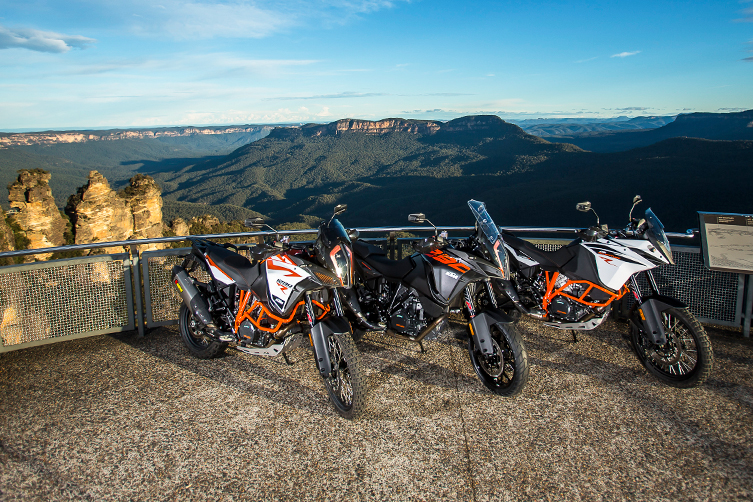
1. ARE THESE 2017 BIKES WORTHY OF THEIR “NEW-GENERATION” TAG?
A cynic might argue that it’s a bit cheeky for KTM to refer to these 2017 Adventure machines as “new-generation”. After all, their engine, chassis and suspension platform don’t appear much different at a glance. But when you consider the collective significance of the changes to the engine, fork and shock, bodywork, electronics and added features – and the fact these new bikes are now Euro 4 compliant – KTM’s 2017 Adventure range certainly earns its “new-generation” tag.
2. WHERE’S THE 1190 GONE?
When the 1190 was first released in 2013, it was a landmark new model for KTM. But that first 1190 Adventure R model didn’t win all of KTM’s 990 Adventure owners over – not in Australia anyway – for the simple reason that it was not as capable as its predecessor in the dirt. The 1190’s engine and electronics packages were excellent, but for guys who took the bikes off-road a lot, the bike’s suspension found its limitations pretty quickly and let the package down. However, there was more to the 1190’s disappearance than that. As Gustav Greiner, Product Marketing Coordinator for KTM’s Adventure models, explains, it was also due to the fact the new Euro 4 regs prompted a complete rethink about the brand’s Adventure line-up for 2017. “It made no sense to continue with three engine capacities – the 1050, 1190 and 1290 – for 2017,” says Greiner. “We saw the introduction of Euro 4 – and the engine changes we would need to make to comply with these new regulations – as a good opportunity to formulate a fresh platform strategy. We decided to focus our attention on two engine capacities only: the 1090 and 1290. In addition to the two-model line-up being easier to understand, this focus also allowed us to make big advances with these two engines,” Greiner went on to say.
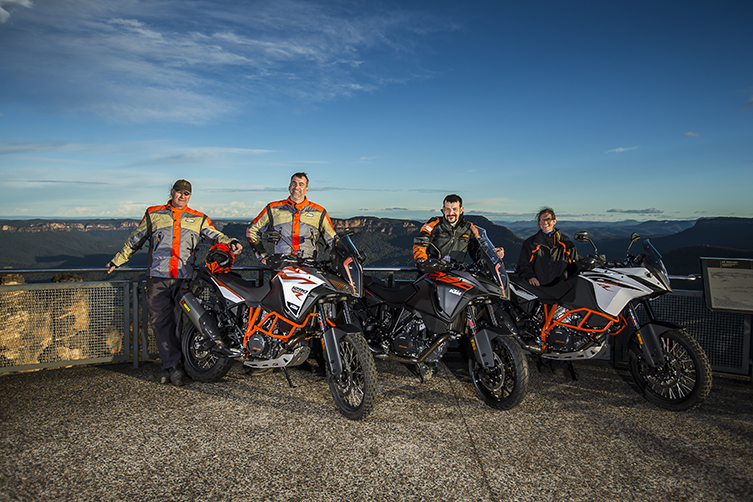
3. WHO IS EACH MODEL DESIGNED TO SUIT?
For a comprehensive insight into what, and who, each new model was designed for, check out the ‘How each model Fits In’ piece we recently posted. But here’s the short answer: the easiest way to look at the 2017 Adventure model line-up is that the discontinued 1190R has been relaced by the 1290R, while the discontinued 1050 has been replaced by the 1090R to create the most off-road capable bike in the range. These 2017 bikes are the fourth generation of KTM Adventure models, and both the 1090R and 1290R have been designed with a greater relative focus on off-road capabilities. Which will be music to Australian riders’ ears.
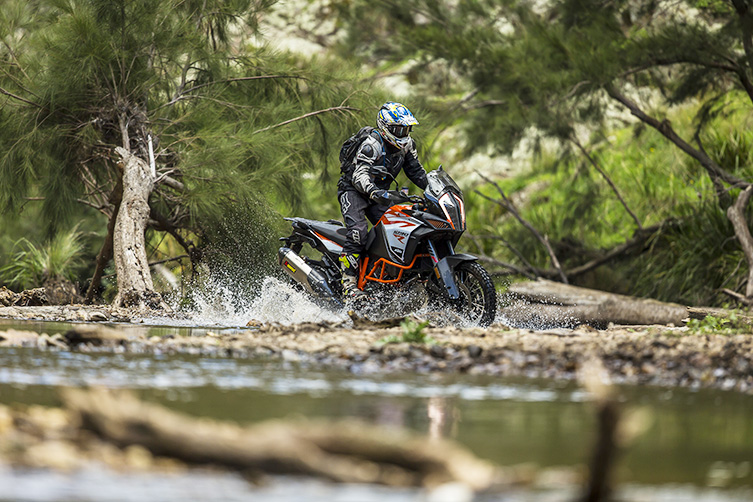
4. WHAT ARE THE MOST NOTICEABLE DIFFERENCES FROM THEIR PRECEESSORS?
The chromoly trellis frame, black swingarm and engine platforms all remain common to 2016 and 2017 models, but the new 1090 and 1290 models get all-new bodywork and graphics, while the two 1290s’ new ‘face’ – its novel-looking split headlight and windshield – really distinguish them from previous KTM Adventure models. In spite of having to meet the more stringent Euro 4 emission regs, the mods made to the bikes’ cylinder heads, inlets tracts and EFI have combined to generate notable gains in power and torque for 2017, plus both capacities’ low-rev power delivery is much smoother and more refined than their predecessors. Similarly, the updated electronic packages – the 1290 models’ in particular, with its rider aids and all-new TFT display dash – rate more than a passing mention.
But it’s the suspension performance that most sets these 2017 bikes apart from their predecessors, thanks largely to the componentry that the WP fork and shock have adopted from KTM’s Rallye and enduro models. Now with two pistons, the new PDS2 shock absorber gives the bikes’ rear-ends a much more progressive feel when pushed hard, while the sealed hydro-stop system in the new WP 48mm fork (borrowed from the new Xplor fork that was introduced to KTM’s 2107 enduro range) helps the fork ride higher in its stroke and offers much-improved bottoming resistance.
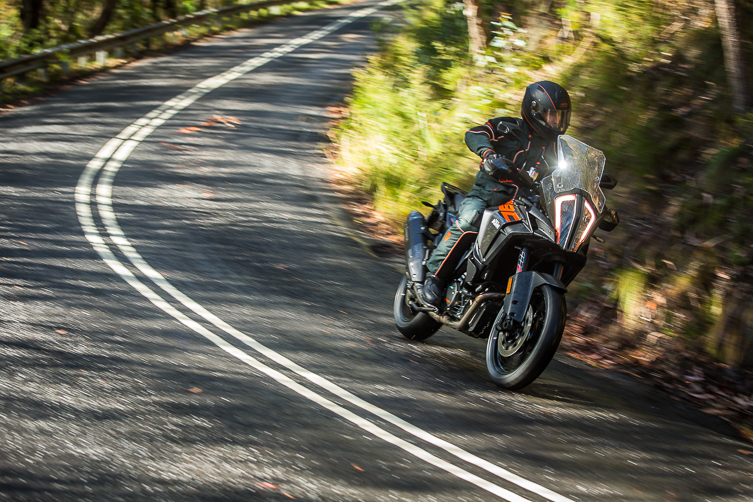
5. WHY DOES AUSTRALIA ONLY GET THREE OF THE FIVE MODELS?
In short, because European and Australian markets have a very different definition of “adventure”. In Europe, 90% of KTM’s Adventure machines will spend a greater majority of their time on sealed roads. In Australia, however, 90% are purchased to use on unsealed roads. As a result, KTM Australia has only brought in a limited number of the road-oriented ‘Sport’ model, the 1290 Super Adventure S. A majority of the bikes they expect to sell here will be accounted for by the new 1090R and 1290R.
According to KTM Australia’s General Manager, Jeff Leisk, “Our decision to bring in only the 1090R, 1290R and 1290S was based on an understanding of where KTM fits into the market place in Australia. Obviously, KTM needs to make products that fit into a global market, but Australia is much more oriented to off-road than Europe, whose sales of the R and S models are virtually opposite to what we see here. Currently, total sales of adventure bikes in Australia is around 5000 units per year – 3200 of which is made up by large-capacity adventure models – and we think our 2017 Adventure models will give us the best opportunity we’ve had in many years to claim a larger share of that market. For riders who are really serious about going off-road, KTM makes a purpose-built 450cc Dakar Rallye Replica model. But for guys who want a machine that’s very capable off-road, that’s super-smooth and comfortable on the road, and that offers a great fuel range, then these 2017 1090R and 1290R models give them everything they’re after. And I think the incredible versatility these models now offer consumers – the freedom they give you to get out of the city’s limits and explore – will continue to underpin the growth in the market segment,” Leisk went on to explain.
6. HOW GOOD ARE THE ELECTRONICS?
In 2013, KTM came out swinging with the electronics package on their first 1190. The sophistication of the bike’s fly-by-wire throttle, advanced multi-setting ABS, and Traction Control (MSC) took the market by surprise. Well, KTM’s 2017 bikes have refined that intelligent electronics package even further. The only problem is that you need a Masters degree in linguistics to keep up with the acronyms used to describe all the electronic wizardry! In addition to the ABS, you’ve got MTC (Motorcycle Traction Control), TPMS (Tyre Pressure Monitoring System), HHC (Hill Hold Control), the MSR (Motor Slip Regulator) clutch, etcetera – all of which is displayed on your TFT (Thin Film Transistor) dash! And then there are other features, such as the electronically controlled cornering lights, which sound like a very functional safety feature, but which we are yet to properly test at night. In fact, given we only had one day to test the new range at the media launch, we plan to grab the 1090R and 1290R in the coming weeks for some longer rides and bring you a more comprehensive evaluation of the updated electronics. What we can say is that all systems ‘intervened’ very subtly, which is exactly what you want from any electronic rider aid. And the fact it was easy to switch between the entirely different dash and menu systems used on the 1090 and 1290 models points to how intuitive both are to use.
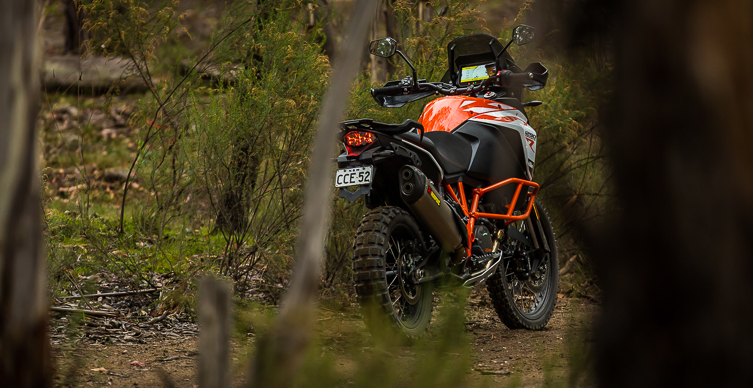
7. HOW WELL DO THE R MODELS RIDE ON THE ROAD?
For riders accustomed to road bikes with 17-inch front wheels and rubber that’s dedicated to the blacktop, the connection that KTM’s 1090R and 1290R have with the ground will feel a little vague. On the road, the combination of their 21-inch front wheels, dual-purpose rubber and long-travel suspension gives them a wallowy feel if you try to push too hard through a series of fast sweepers or tight twisties. But for a bloke with an off-road background who’s spent the morning on a 1090R or 1290R, scrabbling up a series of rocky hills at walking pace, the road-going capabilities of these two machines will feel mind-bogglingly good. No, you can’t crank the things over as far as the smaller-wheeled 1290S, but the ride is incredibly comfortable, smooth, stable and refined, and the brakes are more than capable of pulling them up very quickly. The power-assist slipper clutch helps prevent rear wheel chatter if you come into a corner too hot, and the 1290R’s Quickshifter Plus technology gives its transmission a super-smooth feel and operation. Winding up some more spring preload on the shock absorber definitely helps balance these R models and improves their manners on the road, but if keeping your mates on sports bikes honest is your thing, then you ought to be looking at the 1290S rather than the R models. With smaller wheels, road-going tyres, and semi-active electronic suspension, the 1290S offers a next-level experience on the tarmac by comparison.
8. WHAT’S THE MOST CAPABLE MACHINE TO TAKE OFF-ROAD?
The 1090R is the best machine to take off-road, by a long shot. Yes, it’s true that both the 1090R and 1290R use the same up-specced WP suspension components, but the 1090 is far less inclined to bottom out. The simple fact of the matter is that the fork and shock work a lot more effectively in the 1090R because the bike is 10kg lighter. In off-road terrain, the 1090R feels like it could be 15kg lighter because of its lower reciprocating mass, while the 1090R’s off-road agility is also aided by narrower ergos. In the ‘Offroad’ riding mode, the 1090’s reduction in horsepower (from 125 to 100) just seems to work in perfect harmony with the traction control and ABS settings to produce a confidence-inspiring and predictable ride, even when the going gets rough.
Compared with the 2016-model 1190 Adventure R, the 2017 bikes’ suspension upgrades allow you to handle much bigger bumps and jump-landings without unsettling the ride. Obviously, it’s unrealistic to think that the new fork and shock will ride like EXC models and completely eliminate bottoming, but it’s clear that the new suspension package makes these machines more versatile and forgiving in the dirt. While the fork and shock in the 1290R is also noticeably better than the 1190R’s, it doesn’t give you the confidence to hit bumps anywhere near as hard as you can on the 1090R.
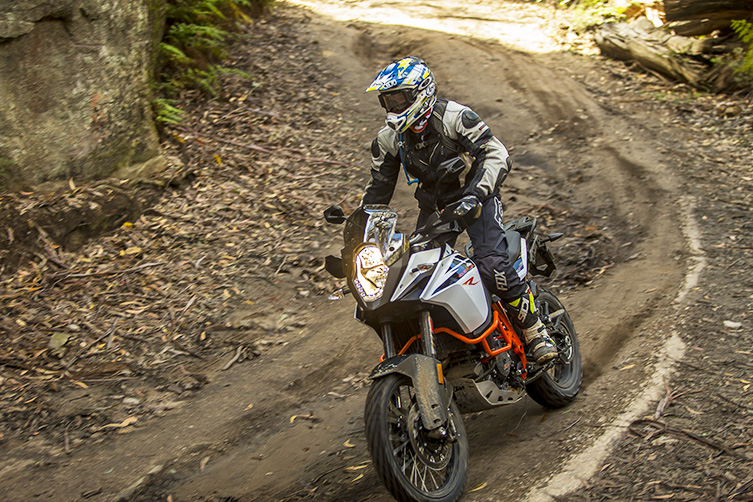
9. WHERE DOES THE 1290R SHINE?
With the 1290R delivering 102Nm of torque at just 2500rpm, you can drive this bike seamlessly out of turns in a tall gear. Combined with its more sophisticated traction control system (with lean-sensitivity), that makes the 1290 easier than its smaller sibling to power-slide in long, smooth, controlled arcs. The 1290R does get slightly firmer damping at both ends, but that’s more than offset by its greater curb weight, and by the fact that it tends to throw more weight onto its front-end when you back off, which bottoms the fork hard. In terrain with square-edged bumps, we found it was actually better to run the 1290R in ‘Street’ or ‘Sport’ riding mode (rather than ‘Offroad’), but keep both the ASB and Traction Control on their Offroad settings. This set-up gives you more instantaneous throttle response (albeit with 160hp on tap!), which makes it easier to the keep the big 1290’s front wheel light over the nastier bumps.
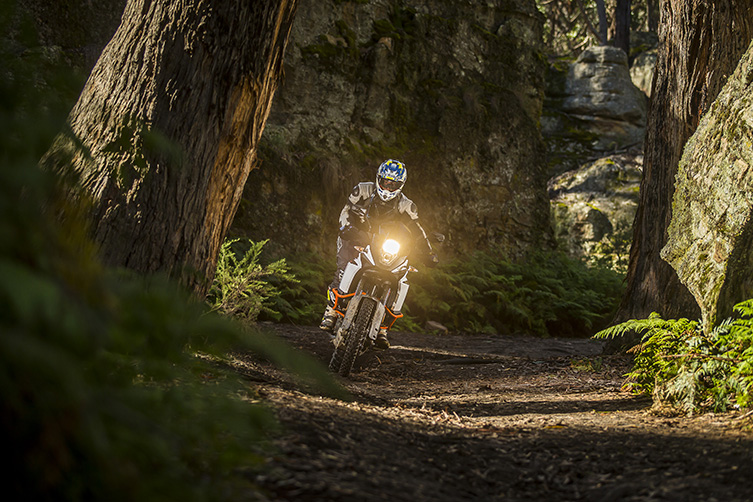
10. ANY SMALL BUT MENTION-WORTH THINGS?
Yep, lots of them. It’s incredible to think just how much technology and how many features come as standard equipment in these machines, bit it’s often a bike’s details that can make or break the ownership experience. And this is where the 1290R comes up trumps and starts ticking a lot of boxes. And with a price tag that’s $6000 dearer than the 1090R, so it should.
Here are some of those features that rate a mention:
- The TFT display dash. It’s really easy to read on the fly, even when it’s in direct sunlight.
- The indicators. The Automatic Turn Indicator Reset (ATIR) switches the indicators off after 150 metres and/or 10 seconds if the rider doesn’t use the switch to turn it off. That’s a great safety feature, especially for off-road riders who aren’t in the habit of using their (non-existent) indicators.
- The illuminated switchblocks. It might not sound like much, but this small, practical addition for 2017 makes the controls a hell of a lot easier to use at night.
- The phone pocket. It’s positioned near the steering head and comes with a USB port to you can charge it on the run. Right next to it is the cigarette lighter-style charger into which you can plug your GPS or other device.
- The cruise control. Now that it’s been moved the left-hand side of the handlebars, it’s a whole lot easier to use safely.
- The keyless ignition. Rather than a conventional ignition key, the 1290 models are now ‘activated’ by a transponder – so long as it’s in close proximity to the bike (like the pocket of your jacket, pants or backpack). That eliminates the danger of accidentally leaving the key in the ignition when you wander off to grab some food or take a leak.
- Super-light controls (this one applies to both 1090 and 1290). For two large-capacity four-strokes with so much power, their throttle action and clutch pull are both incredibly light. Like an EXC model, you can literally use one finger on the clutch all day in tight terrain.
More on the 2017 Adventure Range from KTM
- KTM ADVENTURE RANGE: HOW EACH MODEL ‘FITS IN’
- KTM ADVENTURE RANGE: DESIGN INSIGHTS
- KTM ADVENTURE RANGE: THE TECHNOLOGY
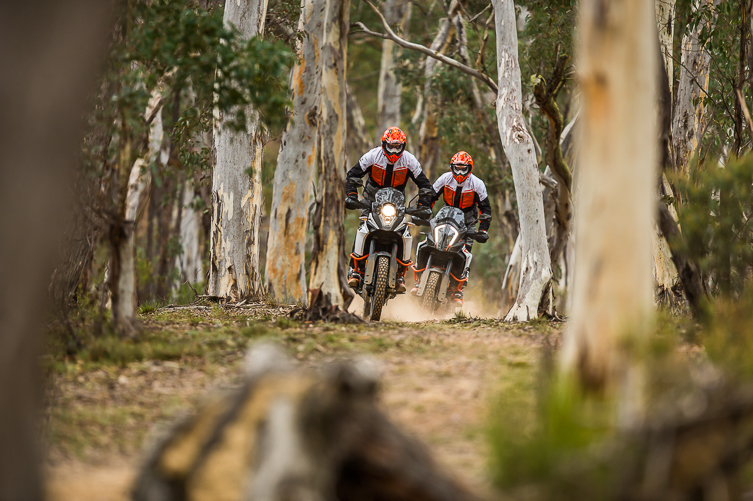
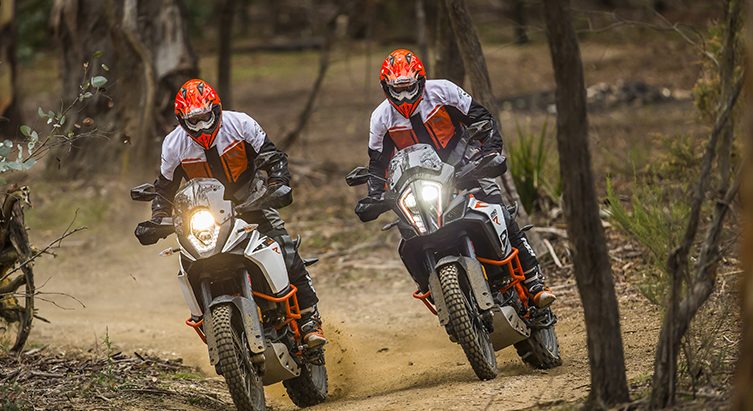
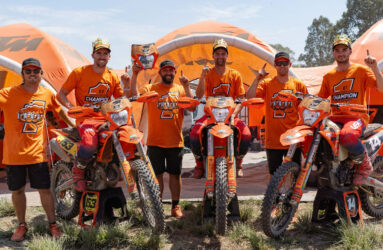

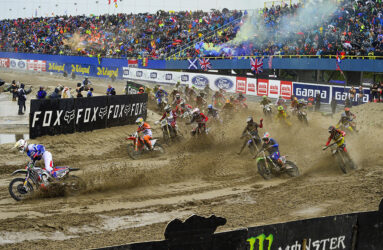
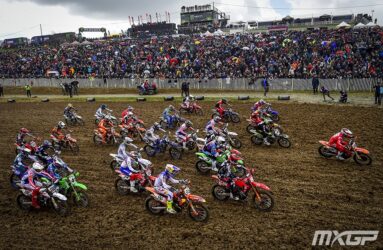

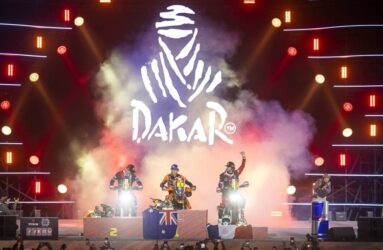
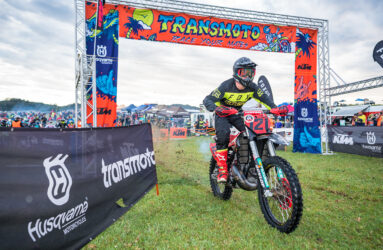

Be the first to comment...